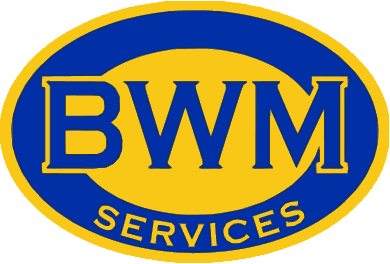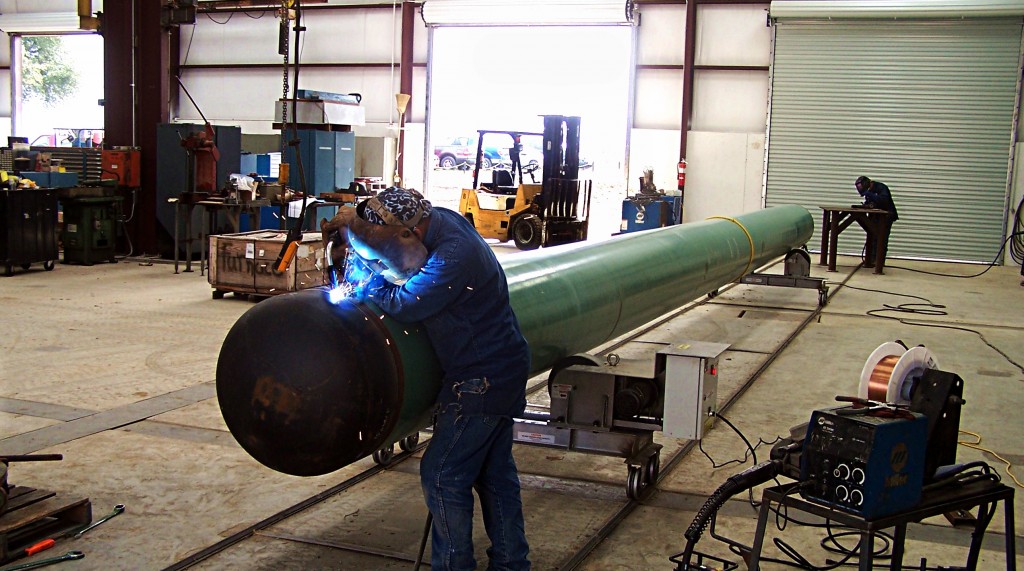Issues such as porosity and incomplete fusion that can cause a weld to fall—which results in time and money spent on rework—can be prevented with the help of surface preparation and interpass and postweld cleaning.
While surface conditioning plays a critical role in pipe fabricaiton in the shop and in the field, many welding operators receive little training in the key safety issues involved in proper surface conditioning. Following these guidelines and safety tips provided below will help you safely obtain a clean surface in preparation for welding, as well as keep operators safe and improve the quality of welds produced.
The Pipe Fabrication Process
A bevel is typically cut on each pipe end when joining two pieces of pipe. A pipe must be properly prepared for the welding process, even when it is beveled on the ends. Rust, pitting and corrosion that can take place on the bevel itself are eliminated during this process. Additionally, there is a flat portion near the bevel called the “land”, which also must be properly cleaned.
The two joints of pipe are lined up with an appropriate root opening for welding once the bevels and lands are prepared and ready to be welded. Often times, they are tack welded together. These tack welds may be ground or touched up with a grinding or cutting wheel before the root pass is laid.
After the root pass is complete, it is usually ground with a thin grinding wheel to prepare the surface for the next pass in the welding application — the hot pass. A wire brush is typically used for cleaning between each of the remaining passes to remove any impurities or slag after the hot pass is laid down.
Many of the same safety tips apply to the various stages of pipe fabrication, no matter the surface preparation tool being used or the size of the tool.
A general safety tip to be aware of during weld preparation and interpass cleaning of pipe is watching any pinch points where a wheel can snag and get tied up in a tight area, which can result in kickback of the tool.
The button is the area where two separate welds meet when there are two welding operators welding on the same piece of pipe — which often happens with large-diameter pipe. Typically, this is a difficult area to clean with a wire brush. Avoid applying too much pressure when cleaning the button, which can lead to wire breakage. Instead, increase the “dwell time” at the spot by allowing the brush to sit and spin in that area without moving the grinder. By letting the wire points hit that surface, this allows it to clear up any small pockets that can happen inside the button.
Appropriate Tool Selection
As with any surface conditioning work, for weld preparation in pipe fabrication, it is just as important to match the speed and size of the tool to the speed and size of the tool to the speed and size of the accessory. This applies whether the tool being used is a wire brush, a grinding wheel or a flap disc.
The speed of the accessory must meet or exceed the rated speed of the tool for safe usage, no matter what type of accessory is used to prepare the weld. If the rpm rating on the tool or accessory cannot be read, it should not be used.
Another important safety step in weld preparation is always using tool guards. Any accessory used with a tool should fit inside the guard properly for safe usage.
Benefits for pipe welding can be offered by making tool guards that are easily moved or adjusted, since the welding operator may be continually changing positions around the diameter of the pipe.
To provide the appropriate level of protection, the tool guard should be positioned between the welding operator and the working end of the tool or accessory.
Use the Right Amount of Pressure
Using the appropriate amount of pressure is a safety tip that always applies, whether you are preparing a weld in the shop or in the field — and no matter the tool.
The pressure being applied should essentially be the weight of the tool being used. The wires can break if too much pressure is applied when using a wire brush. Applying too much pressure when using a flap disc or grinding wheel can cause the operator to slip and possibly be injured.
The important thing to remember about pressure is that operators should apply only the weight of the tool, without leaning on the tool or pushing hard, for the best and safest results. If the welding operator has to apply pressure to get the job done, it is likely he or she is using the wrong accessory or using the tool at the wrong speed.
Proper Positioning
Another important safety consideration in weld preparation is using the proper positioning, both of the tool and of the operator’s body in relation to the workplace. In the field, where often larger pipes cannot be moved and the operator must change positions around the pipe, this can be more difficult.
It is important, for the safest operation, for the the operator to position his or her entire body square with the work surface, rather than just moving his or her arms. This allows the operator to get the proper work angle and have the most control over the tool. You can help ensure a secure hold on the tool to resist kickback and slippage by using both hands and having one hand on the tool handle.
For operation safety, the orientation of the tool on the work surface is also important. While some tools should be held flat against the surface, other tools should be held perpendicular to the surface. This helps to ensure that the right pressure is being used on the tool, thus reducing the chances of an operator slipping.
Watch for Wear
Another aspect to keep in mind for the safest usage of tools and accessories in weld preparation is to watch for wear of the products.
Many times, as a product becomes smaller in diameter with use over time, it can become harder to control. This can pose safety issues for the operators. The wires in wire brushes can also, over time, begin to break down and have the potential to come off during use, which is a sign that it’s time to replace the brush.
An operator has a tendency to apply more pressure when a wheel stops cutting at the rate that is was designed for, which increases the chances of slipping and injury. The need to apply more pressure to get the same performance from the product is another sign that the accessory should be replaced.
In addition, as a grinding wheel or cutoff wheel wears and becomes smaller, it should never be used with a tool of a different size for which it was not designed. For example, a 9-in. grinding wheel that reduces in diameter with use should not be used on a 6-in. grinder just because it fits. It is important to remember that the rpm rating of the accessory must meet or exceed the rpm rating of the tool.
Not only is the product worn down so much that control becomes harder, but it is also an issue of the depth of cut or reach of the accessory once it becomes smaller with use. For example, it may not reach the areas necessary on a very thick pipe, which impacts easy access and maneuverability for the operator.
Be Safe in Weld Preparation
By following these common safety tips when using the various tools for weld preparation in pipe fabrication, a safer environment can be provided for the operator and workers who may be working in close proximity.
Not only does using the proper procedures improve the safety for operators, but it also can have an impact on the finished weld quality and result in reduced rework, thus saving time and money.
A quality weld always starts with a clean, prepared surface. When performing these common tasks for welding, always keep safety guidelines in mind.
Source: aws.org


